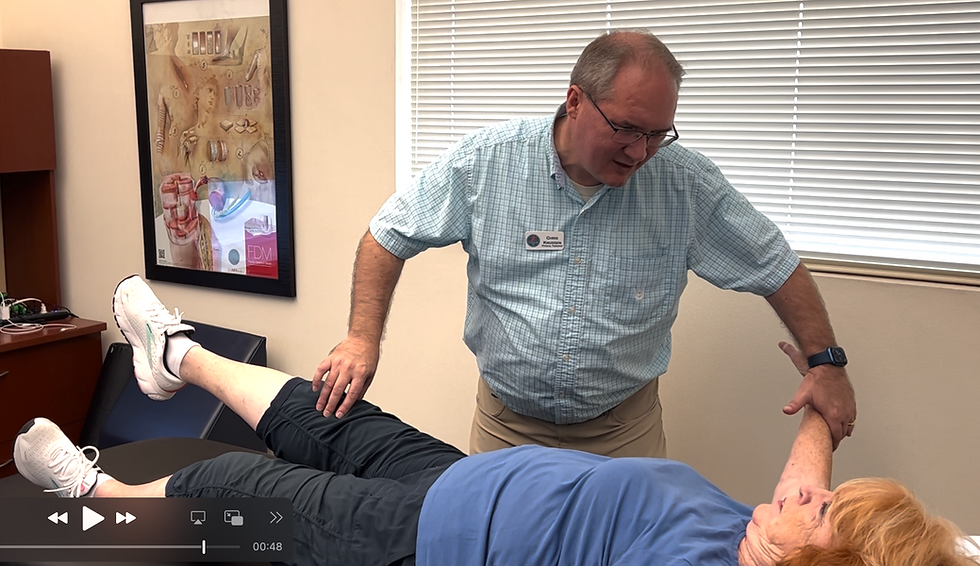No Pain, No Gain- False Idea!
- muscleiq2
- Dec 2, 2021
- 3 min read
Does “No Pain, No Gain”Help Chronic Pain?
Millions of people suffer from chronic pain and the preferred treatment for years has been opioids. What the world needs is a better solution to chronic pain. It is time to replace opioids with stronger muscles. We need to stop using the phrase “No Pain, No Gain”, and use the better phrase “Strong Muscles Protect, Weak Muscles lead to injury and pain.”
First Principles.
As Elon Musk frequently says, “To solve any problem we need to go back to First Principles.” There is a long-standing false principle in our culture that hampers our ability to successfully deal with chronic pain. It is the idea that when you are exercising there should always be pain. No pain, No Gain. Right?
Wrong!
It is time for this belief to go away. Just like blood letting. For those with injuries, exercising past the point of pain can actually result in more weakness. And, pain makes people want to just stop and not do any exercises.
Principle #1: Muscles Work By Reflex.
There are two reflexes that control much of our muscle output. The myotatic reflex and the withdrawal reflex. Pain stimulates the withdrawal reflex. This reflex is the protective reflex. It can be most evident when you touch a hot stove, or when you step on a tack. Your body reflexively responds to this pain by changing the muscle tone in specific muscles to help protect the painful area. This happens every time you injure yourself. We may not even be aware of it, but our body reduces muscle tone to protect us. Your muscles are turned off, in an attempt to get you to stop doing whatever it is you are doing to hurt this area.

Principle #2: Pain Turns Muscles Off.
We can measure which muscles are turned off by doing manual muscle testing. Most people with chronic pain have weakness in multiple muscles and don’t know it. We are not consciously aware of the state of every muscle in our bodies at all times. What we are aware of is pain in a certain area of our body. Pain is usually a result of injured tissues in the body. That pain is linked to a muscle weakness that probably led to that injured tissue. That injured tissue can also be causing a protective reflex to turn off certain muscles. We can identify where the shut-off response is originating from through testing.
Principle #3: Treating the Correct Tissues Turns Muscles Back On.
Identifying the weak muscles is the first step in identifying the correct tissues to treat. People are always surprised to see muscles that were weak a few minutes ago suddenly responding with a lot more force after we treat the correct tissue. It seems like magic. The muscle was off and now it is on. This only happens when the correct tissues are treated and the protective reflex is no longer shutting off that muscle. Pain turns muscles off. Relieving the pain lets the muscles turn back on. The withdrawal reflex is turned off. The manual muscle testing is repeated and now the muscle responds like a normal muscle should. The response is normal, but if the weakness has been there for a long time then that muscle is still deconditioned.
Principle #4: Deconditioned Muscles Need to be Reconditioned.
The right exercises and the right amount of resistance and repetitions is very important for a successful reconditioning of a deconditioned muscle. The best prescription for exercise starts with strength testing. When rehabilitating injured muscles the weight or resistance needs to be light and the repetitions need to be high. Low weight, proportionate to the strength of the muscle, ensures a more pain-free experience. You want to avoid pain while exercising injured areas. Repetitions should be high to promote endurance and blood flow. High repetitions also help counteract the negative state of deconditioned muscles.
“Lower the weight, increase the reps,” is a better philosophy for chronic pain than “No Pain, No Gain”. Pain shuts muscles off and makes muscles weak. To keep muscles turned on you must keep the exercise pain-free. Strong muscles protect. Weak muscles lead to injury and pain.





Comments